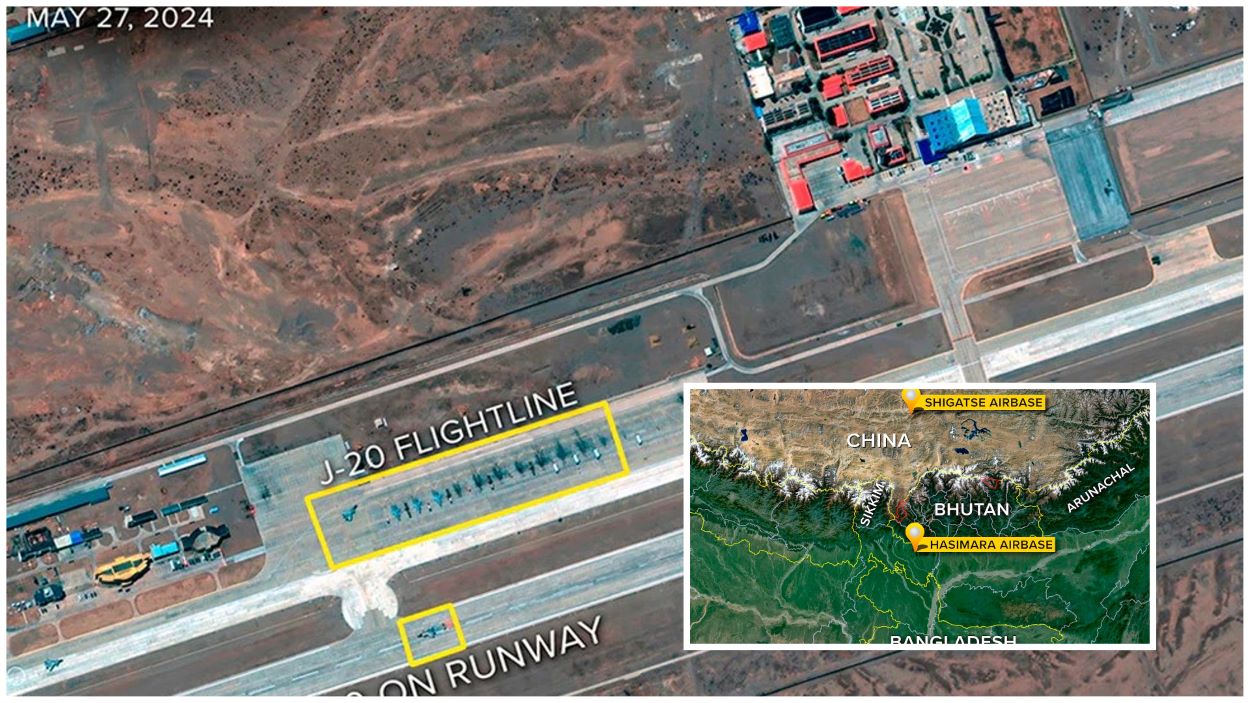China is strengthening its military presence near Sikkim by deploying at least seven J-20 stealth fighters to the Shigatse airfield in Tibet. India has also deployed Rafale fighters stationed less than 300 kilometres away at the Hasimara base in Bengal.
NDTV’s high-resolution satellite imagery confirms the presence of these advanced aircraft at an airbase strategically close to the Indian border. This base also serves dual civilian and military purposes and sits at an altitude of 12,408 feet.
China’s new deployment differs from its usual along the Eastern frontier, where it defends the Pacific seaboard. The J-20, known for its stealth capabilities, was previously concentrated in regions facing the Pacific but is now positioned closer to the Indian frontier.
The presence of J-20 fighters at Shigatse is particularly noteworthy given the ongoing enhancements in China’s military infrastructure in Tibet. Indian Analysts see this as a broader strategy to bolster frontline capabilities and showcase military strength over the Himalayas.
The deployment also coincides with an increase in China’s construction of air bases and upgrades to existing facilities near the Indian border, a move paralleled by India’s enhancements to its air defences. These include deploying the S-400 missile system, which has been integrated into India’s layered defence strategy along the Line of Actual Control.
The S-400 system, noted for its capability to track stealth aircraft, was acquired from Russia in a deal valued at approximately $5.43 billion. Recent conflicts have highlighted vulnerabilities in the system’s defences despite its advanced technology.
China’s deployment of the J-20 to Shigatse sends a strategic message to India, showing China’s confidence in its military capabilities and questioning India’s readiness to respond to such advancements.
The Chengdu J-20, also known as the Mighty Dragon, represents China’s top tier in air superiority fighters. It is equipped with advanced sensors and long-range missiles capable of engaging targets up to 300 kilometres away. Its deployment is part of China’s push to enhance its “Intelligentized” defensive capabilities across Tibet, integrating new drones, electronic warfare platforms, and other assets into a cohesive networked force.
As tensions persist, the strategic dynamics in the region continue to evolve, with both nations showcasing major advancements in military technology and preparedness.






